History of Astrakhan
Foundation of Astrakhan
Astrakhan, the oldest city of the Lower Volga region, is included in the list of Russian cities recognized as historically valuable. From ancient times, trade routes of Persians and Arabs passed through this territory.
For the first time Astrakhan was mentioned by historians, scientists, travelers in the 13th century. The town was part of the Golden Horde. It was located about 12 km north of present Astrakhan on the right bank of the Volga River. The town was known by such names as Astarkhan, Ashtarkhan, Hajji Tarkhan.
Hajji Tarkhan played an important role in trade between Asia and Europe. Trade caravans with silk, spices, and other goods passed through the town. In 1395, Astrakhan was captured by the army of Tamerlane and plundered.
It was rebuilt with the formation of the Astrakhan Khanate in 1459. In the first half of the 16th century, Astrakhan, due to its favorable geographical position, began to attract the attention of the Ottoman Empire, the Crimean Khanate, and the Nogai Horde. The Grand Duchy of Moscow was also interested in establishing control over this region.
In 1556, after several campaigns of Russian troops sent by Ivan the Terrible, the Astrakhan Khanate was liquidated, its territory became part of the Russian state. In 1558, a Russian wooden fortress was laid on the left bank of the Volga River.
More historical facts…
Astrakhan - the main Asian gate of Russia
For the Moscow Kingdom, Astrakhan became not only a powerful military outpost in the southeast, but also its main trading gate to Asia. In 1582, stone walls with 8 large and small towers were built. The town grew quickly - the remoteness of this region and the need for labor attracted a lot of Russian settlers.
The Astrakhan Kremlin was built at the beginning of the 17th century. Both cathedrals located on its territory were constructed by architects from Yaroslavl in the traditional style of Russian church architecture in 1700-1710.
In the middle of the 17th century, Astrakhan was one of the border fortresses of the Russian state guarding the mouth of the Volga. Since 1668, Indian merchants had a permanent residence in the town and various benefits as people useful in the development of trade. The plague epidemic of 1692 claimed the lives of more than 10 thousand people out of 16 thousand inhabitants of Astrakhan.
For almost three centuries, Astrakhan was the main administrative center through which trade and political relations of Russia with the countries of the East, Transcaucasia, and the North Caucasus were carried out.
In the 17th-18th centuries, standing at the crossroads of caravan and waterways, Astrakhan turned from a small fortress in the south of Russia into a large trading town. The Volga River became the country’s most important transport artery.
Intensive Russian colonization of the Astrakhan region began in the 18th century. In 1717, by the decree of Peter I, the Astrakhan province was formed with almost the same borders as the present Volga Federal District. Astrakhan received the status of a provincial town.
In the first decades of the 18th century, a strong navy, admiralty, shipyards, and port were created in Astrakhan. After the Russo-Persian War of 1722-1723 (the Persian campaign of Peter the Great), the northwestern provinces of Persia (Gilyana, Mazandaran, Astrakhbad) were annexed to the Russian Empire, which had a huge impact on the development of the economy of the Astrakhan province.
Astrakhan in the 19th-20th centuries
In 1811, the population of Astrakhan was about 37,800 people. In the 1860s, in connection with the development of oil fields in Baku, the Astrakhan port became one of the largest in Russia. In 1873, the world’s first oil tanker sailed on the Caspian Sea. It was built by the Astrakhan shipowners, the Artemyev brothers, who poured oil for transportation directly into the hold of their sailing ship “Alexander”.
This technical solution was used by the Swedish industrialists, the Nobel brothers, who had their factories in Astrakhan and were engaged in oil development in the Caspian. In 1875, they built the world’s first steam oil tanker. In 1885, there were 62 factories in Astrakhan and its environs. Among urban industries, fishing and horticulture (especially viticulture) stood out.
In 1897, according to the census, 112,880 people lived in Astrakhan: Russians - 86,563 people, Tatars - 15,355, Armenians - 4,038, Jews - 2,115, Germans - 1,573.
From 1920 to 1928, Astrakhan was the capital of Kalmyk Autonomous Oblast. Until 1934, it was part of the Lower Volga Region, from 1934 - the Stalingrad Region. In 1939, the population of the city was 253,595 people. In 1943, Astrakhan became the center of Astrakhan Oblast.
In the 1950-1960s, the city was reconstructed. A new master plan for development and reconstruction was approved, according to which new parks were laid out, squares were formed, the Volga embankment was reconstructed, and the Astrakhan Kremlin was restored, new residential neighborhoods were built. At the end of the 1980s, the population of Astrakhan exceeded half a million.
Today, Astrakhan remains an important transit trade center and a major transport hub at the junction of Asia and Europe.
Architectural contrasts of Astrakhan
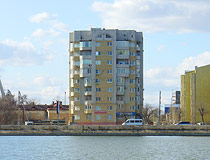
Apartment building in Astrakhan
Author: Dvornikov Mikhail
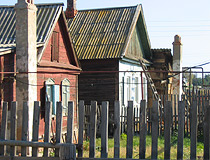
Old wooden houses in Astrakhan
Author: Groshev Yuri
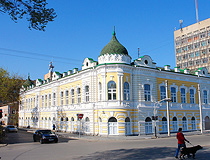
Imperial and Soviet architecture in Astrakhan
Author: Bakhshiev E.M.
Astrakhan - Features
Astrakhan is located in the southeast of the East European Plain, in the Caspian lowland. The city stretches along the Volga River coast for more than 45 km on 11 islands. Astrakhan is somewhat similar to St. Petersburg - islands connected by a large number of bridges.
The City Day of Astrakhan is celebrated on the third Sunday of September. The Astrakhan Airport offers regular flights to Moscow.
The climate is temperate continental, arid, warm with large annual and summer diurnal amplitudes of air temperature and low rainfall. This type of climate is explained by the geographical position of Astrakhan in the semi-desert zone.
On average, there are 213 sunny days a year in Astrakhan. By the amount of annual precipitation (234 mm), Astrakhan is the largest arid city in Europe. The average temperature in January is minus 3.7 degrees Celsius, in July - plus 25.6 degrees Celsius.
The location of Astrakhan in the delta of the Volga River with rich reserves of natural resources contributes to the development of the fishing, fruit and vegetable, chemical and petrochemical industries, shipbuilding, and tourism.
The shortest routes connecting Europe with the countries of Central Asia, India and Pakistan, and the countries of the Indian Ocean basin pass through the Caspian Sea. The leading positions in the local economy are occupied by the enterprises of the fuel and energy complex (oil and natural gas production), shipbuilding, and the food industry.
Main Attractions of Astrakhan
The Astrakhan Kremlin (1580-1620) is the main historical and architectural attraction of Astrakhan. This picturesque ensemble of monuments of defense architecture, religious, and civil architecture includes 22 objects of the 16th - early 20th centuries. The Cathedral of the Assumption (1699-1710), the largest Orthodox church in Astrakhan, is located on its territory. This is one of the best examples of Russian church architecture of the early 18th century.
The Embankment of Astrakhan is one of the favorite places for walks. Here you can see a number of old buildings, unique fountains and enjoy the views of the Volga - the main river of Russia. The Petrovsky Fountain also known as the Musical Fountain is of the greatest interest. The show takes place every hour and is especially beautiful in the evening when the illumination is turned on.
“Selenskiye Isady” is the most famous market in Astrakhan that has become a popular tourist attraction. Here you can buy mainly processed fish: dried, smoked or caviar. The choice is very wide and a lot of sellers offer to taste their fish products. Prices are relatively high, but you are allowed to bargain - it is a market after all. Pokrovskaya Square, 3?. Opening hours: 08:00-18:00.
If you are interested in ecotourism, then from Astrakhan you can go on an excursion to the Astrakhan State Natural Biosphere Reserve located southeast of the city. Its territory is included in the list of wetlands of international importance. Tsarev River Embankment, 119.
Astrakhan State Picture Gallery named after P. M. Dogadin is the largest art museum in the Astrakhan region. The collection includes works by famous Russian artists of the 18th-20th centuries including the Russian avant-garde. The gallery also has a large collection of West European engravings of the 17th-19th centuries. Saratovskaya Street, 14. Opening hours: 10:00-18:00 (Thursday: 13:00-21:00). Day off: Monday.
House of the Merchant G. V. Tetyushinov (1872) - a unique two-story wooden building used as a museum and cultural center. Kommunisticheskaya Street 26. Opening hours: 10:00-18:00 (Thursday: 13:00-21:00). Day off: Monday.
Cathedral of St. Vladimir (1895-1902) - one of the main Orthodox cathedrals of Astrakhan. It was built in honor of the 900th anniversary of the baptism of Russia, as a monument to this significant historical event. General Yepishev Street, 4.
Saray-Batu is a tourist center dedicated to the history and culture of the Golden Horde Khanate located in the Kharabalinsky district of the Astrakhan region, northwest of Astrakhan, near the village of Selitrennoye, in places where the old capital Saray-Batu used to be (also known as Saray-Al-Mahrusa, Old Saray). It was built as the backdrop for the movie “Horde” in 2011.
Astrakhan State Opera and Ballet Theater. One of the most notable objects in the center of Astrakhan, this huge building, which looks more like a palace, is located near the bus station and railway station. The opera troupe of this theater has a wide repertoire: Russian opera, Italian opera, oratorios, chamber programs. Anri Barbyusa Street, 16.
Astrakhan Historical and Architectural Museum-Reserve - the oldest regional museum in Russia. In total, there are about 300 thousand exhibits: unique natural science collections, archaeological, ethnographic, numismatic, taxidermy collections, and much more. Sovetskaya Street, 15. Opening hours: 10:00-17:00. On Mondays, the museum operates only in a guided tour mode.
The White Mosque (1810) - the oldest mosque in Astrakhan built in the forms of late classicism at the expense of the Tatar merchant David Izmailov. In 2006-2008, the building was restored. Kazanskaya Street, 34.


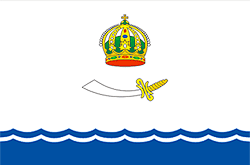
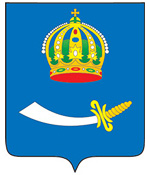
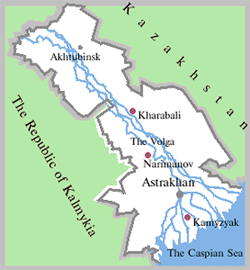



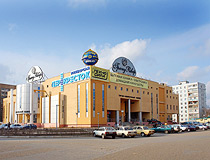
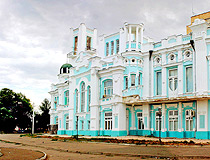
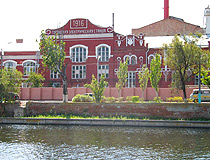
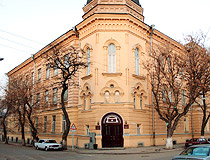

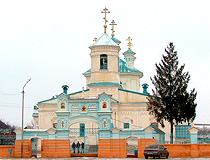
The comments of our visitors
All 7 comments